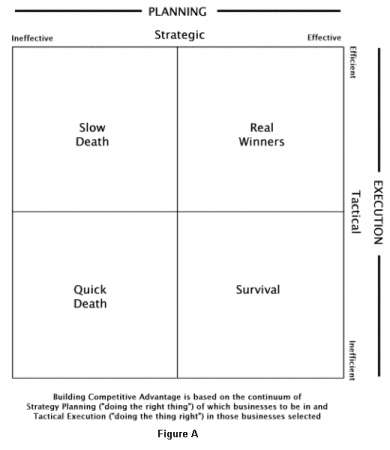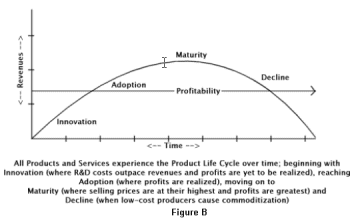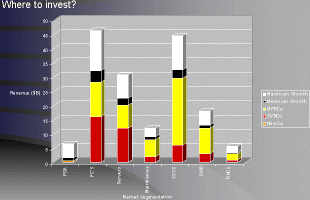
by Arik Johnson
| The
Core of Market Strategy: Turning Market and Competitor Knowledge into Actionable Intelligence |
|---|
In 1815, Nathan Rothschild, became the first banker in London to discover that Wellington had defeated Napoleon at Waterloo, and set in motion the accumulation of a family fortune the likes of which had never been seen before. Rothschild had been banker to Prince William of Prussia who had entrusted his nation's fortune to be invested in the Napoleonic Wars when Napoleon invaded Prussia and Rothschild smuggled it to Wellington in Spain. Meanwhile, Rothschild set about building an intelligence network of agents, riders, ships and carrier pigeons throughout Europe. His agent at Waterloo, a man named Rothsworth, watched as Napoleon fell to the lesser forces of Wellington and within a few hours, Rothschild knew that England had won.
Back in London the following morning, Rothschild arrived at the London Stock Exchange as he did each day, looking very solemn. He proceeded to divest himself of his constituents' shares in the Bank of England and other core stocks, as he sold of large blocks of shares from every sector of the British economy. In the process, he led other investors to believe, quite falsely, that Napoleon had won, and the fever pitch of the sell-off forced prices to rock-bottom levels, where his agents bought up the stock at a fraction of its real value. The Rothschild family became the most powerful financial consortia in Europe, as his brothers established banks in Vienna, Naples and Paris and the Bank of England became a private company of shareholders. In the years hence, the Rothschild family is still one of the richest in the world, with hundreds of operating companies in every corner of the globe in every area of business, although few bear the Rothschild name.
This is more than a demonstration of my misspent youth as a history undergrad; this is the essence of the ability to make decisions - to take action - based on the collection and analysis of market intelligence. And, it demonstrates the nature of competitive intelligence as the core of business strategy. The ultimate goal of any CI undertaking is to produce "actionable" intelligence - something at which most CI programs fail, at least at first. Good research must invariably lead to good analysis - a better understanding of how external forces can benefit the firm in the future. The necessity of CI analysts to contribute to business decision-making is characterized most significantly in two ways: first, the need to make recommendations to one's constituents; and, second, to explain the implications of the alternatives for decision makers.
Today, these lessons from history are most perceptibly applied to the nature of competitive advantage itself - the ability to apply the company's core competency (-ies) to achieve sustainable market advantage - whatever business they may be in. The misunderstanding surrounding CI's two distinct roles - tactical support and strategic decision-making, mires far too many undertakings in the area of acquiring competitor knowledge. This dichotomy can best be explained by saying that strategic intelligence is most concerned with "doing the right thing" - deciding how to best leverage competitively unique, value-building competencies to enter and dominate markets; this involves strategy planning and is measured in terms of effectiveness. Tactical intelligence is about "doing the thing right" - executing the business strategy on an operational basis in each of the lines of business in which the firms competes; involving day-to-day execution against competitors and measured in terms of efficiency. Strategy decides what business to be in; tactics compete effectively in whatever that business may be. Those firms that master both domains - are at once effective in strategy planning and efficient in tactical execution become real winners. Those that lack in either of these realms either die, quickly (if they execute their flawed strategy very effectively) or slowly (if they can neither plan efficiently nor execute effectively), or merely survive (usually the firm that plans well but executes poorly). (See figure A.)
Let's look at the case of IBM under Akers in the late 80's and early 90's. IBM was the dominant market leader in mainframe computing and executed its tactical operations in the market extremely well. However, they had very inefficient strategic direction - characterized most blatantly by being in the wrong business - the mainframe marketplace was not growing at all having reached a stagnant growth rate with the acceptance of the PC in the corporate computing marketplace. IBM's salesforce and operational personnel were better than any in the world. Yet, they were in the wrong business - mainframes. This condition can be described by saying that IBM had very effective tactics and very inefficient strategy - as mentioned above, a condition that would have led to a "slow death" using the principles we've outlined herein.

Knowledge management and the ability to understand not just competitors, but the market as a whole, can be said to create internal and external awareness and responsiveness to market forces - in effect, predict where the market will lead in the future. But the application of such CI programs must be very broad indeed - the most insidious, disintermediating competitive forces a firm will ever experience are those indirect competitors that wreck the marketplace, for you and your direct competitors, by making your business obsolete. Remember the buggy-whip!
Let's take a favorite example of insidious market disintermediation - the Internet. Its effect on commercial realities was seen profoundly in the recent past as we saw small, nimble competitors launch to challenge long-established brick-and-mortar business models. Perhaps the most visible example of the evolutionary impact the Internet imposes on those in this "crucible of the marketplace" is that of the travel industry. Consider travel agents in particular - once proud issuer of airfare and hotel arrangements -- consumers today turn, almost without exception, to the Internet to book their own accommodations, indeed to bid one supplier against another to find the lowest price. This is a textbook example of the product life cycle, run at Internet speed - a technology that, once adapted to the product, forces mature "cash cows" into the decline of price commoditization. How have travel agents adapted to this disintermediation? Darwin's "Origin of Species" is more relevant than any other explanation - it would be a mistaken assumption to see "adaptation" as the driving force - it's really based on "survival of the fittest" (and the death of those who failed to refocus on other markets). Today, travel agents (the ones who've survived) don't sell JUST airfare or hotel stays - they sell TOURS - a value-added solution that takes advantage of older core competencies in building a custom product for customers that seek greater value and are willing to pay for it. An example too of how core competencies can become mere success factors, necessary for all players in a market, customer value in travel being described by the unique understanding of a particular destination and the expertise required to aggregate these customers together for a "tour". As a result, customer needs are met - the desire to travel as a group, bring along an knowledgeable guide or buy a bundle of services rather than putting them together on their own - and that sector survives.
Considering the changing needs of the market, we need to devise methods by which we can tie intelligence back to the competitive strategy process - not just helping our firms compete day-to-day in the businesses we already have - but make business leaders aware of where the market WILL BE in the future and take action to enter those markets at the right time. The now-familiar management directive to "put yourself out of business before competitors do" applies here - but not without considered thought about which business(-es) you should be trying for. Knowledge management that is market focused must be as much concerned about the future applicability of that knowledge, as they are the present.
"So, mister smarty-pants history-major… how do we decide which businesses to be in?"
In order to decide which lines of products or services the firm should undertake with each of its business units, we must first and foremost consider the objectives of the corporation - usually assumed to be support of its various stakeholders, first among equals being its shareholders - most commonly through consistent Growth and Profitability. Incidentally, it should be said that not all businesses have this as their core set of values and objectives - those that don't should seriously consider what their stakeholders would have to say about whatever their REAL goals are. An example of this is the idea lately that the "company is the product", so prevalent in high-tech sectors - that the company itself may never turn a profit or even ship a product before the owners and founders reap their reward. Personally, I find it an obscene notion - if not outright criminal to those who are duped into investing in its continued existence. I won't name any firm in particular but let it be said that the goals of the firm today are often simply to be acquired or folded once the rubes buy into the snake-oil they're selling. But, I digress…
Assuming that growth and profitability are the goals, the firm then seeks to identify markets, both by geography and product/service mix, in which it has competency and is also growing with the potential for profitability. It should be understood that products and services themselves are not the basis for entry into new markets - but core competencies themselves make this determination based on their status as competitively unique (no other firm can do it the way we can) and the customer perception that those competencies contribute a disproportionate share of value (the reason people buy from us rather than someone else). All products or services undergo the same life cycle that we're so familiar with - beginning with innovation where R&D exceeds revenues, moving through the adoption phase over time when they hope to achieve a level of profitability, to maturity when the product becomes the proverbial "cash cow" and eventually reaching decline, when low-cost producers have commoditized the market and product differentiation is based on little more than price. (See Figure B.)

Successful companies are able to innovate on a continuous basis, thereby insuring that they will always have products in all of the various phases, ideally in Adoption and Maturity where they are achieving their highest profit potential.
Intel, for example, leverages its core competencies (brand loyalty and speed to market) in the processor and semiconductor business based upon the seemingly perpetual need (read as "market growth") for faster and faster processors. However, in the past several quarters, based on Intel's recognition that its continued profitability is dependent upon this continued demand, Intel's competitive strategy is reflected in their startup or planning of entries into a number of non-core businesses in order to help ensure continued growth in faster and faster processors. They have, quite correctly I think, perceived that demand has begun to wane with the relative stabilization of clock-cycle-eating software applications - the challenge has become to scrape processor cycle latency back down to zero, thereby increasing demand for more processing power. Specifically, Intel has forays in multimedia (the most processor-demanding applications being video conferencing and gaming, but also rich-media Internet content) and home networking (realizing the potential for users to buy products that leverage the latent computer power available through a simpler way to network PCs together).
So, what IS the goal of such an explanation of planning and execution? Ultimately, it's all about picking those market segments (products) that are likely to grow the most in which you already have or can gain a foothold. Looking at the diagram below, we see that the PC market segment has both the greatest minimum growth (expected) as well as the greatest maximum growth (potential). Therefore, for those organizations with substantial marketshare in those segments, they should continue to invest in those businesses. This is just one example of how to select the market segments you'll want to participate in -- based on what the market will be in the future.

Competitive intelligence is as much about market knowledge and awareness as it is about competitors specifically. The key to this awareness is to create responsiveness on the part of the firm to the threats and opportunities external to it by leveraging strengths and balancing weaknesses internal to the organization. The knowledge that companies acquire remains largely useless to them unless applied to take action in the form of decisions about the two fundamental domains of business activity - strategic (what businesses should the corporation be in) and tactical (how can the corporation best execute those selected businesses). The next time you're wondering about what knowledge of the market and one's competitors really means to your company, keep in mind that mere survival, while both better than a fast death and superior to a slow death of the company is not the goal - the one-two-punch of building effective strategy and executing efficient tactics will help your company become a real winner.
Arik R. Johnson is Managing Director of the Competitive Intelligence (CI) outsourcing & support bureau Aurora WDC. Learn more about Arik at his firm's Web site www.AuroraWDC.com/arik.htm.